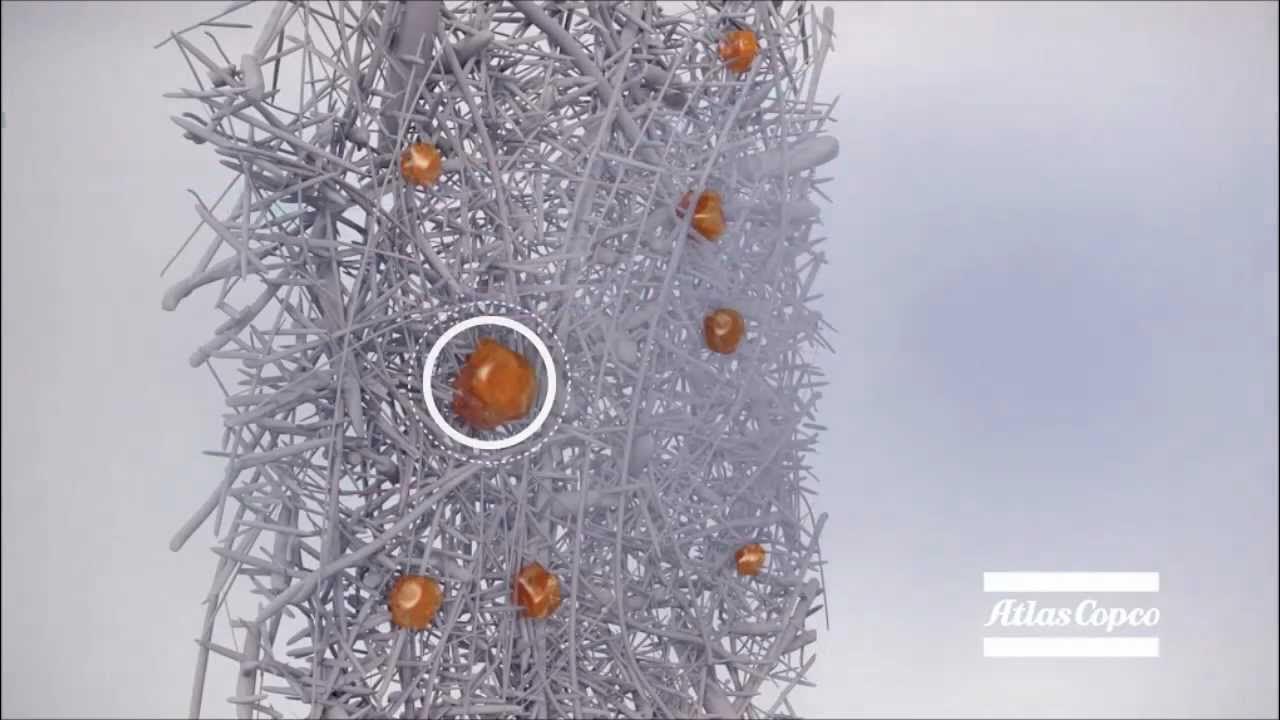Electrostatic Precipitator - ESP Technical Video
Summary
TLDRThe video introduces an Electrostatic Precipitator (ESP), a high-efficiency air pollution control device that removes fine dust particles from flue gas using electrostatic precipitation. It operates with minimal pressure drop and achieves emission levels under 10 mg per Nm³. The process involves charging dust particles negatively through high-voltage electrostatic fields, causing them to collect on cathode plates. These particles are then dislodged and removed via dust handling systems. The ESP ensures clean emissions, contributing to environmental protection and a sustainable future. The video emphasizes the technology's role in creating a greener tomorrow.
Takeaways
- ⚡ ESP (Electrostatic Precipitator) is an advanced air pollution control equipment that operates on the principle of electrostatic precipitation.
- 🌬️ It captures even the finest dust particles with high efficiency, achieving emission levels lower than 10 mg per nm³.
- 🔧 The ESP has a very low pressure drop, less than 20 millimeters of water column.
- 🔋 The process involves passing flue gas with dust particles through a high-voltage electrostatic field, releasing electrons.
- 🔌 High-voltage current passes through anodes, causing a phenomenon called corona, where electrons are released to charge dust particles negatively.
- 🧲 Negatively charged dust particles are attracted to the cathode, where they stick, leading to collection of the particles.
- 🔄 The flue gas enters the ESP through a CFD-optimized splitter and GD screen to evenly distribute it across the ESP.
- ⚙️ Emitting electrodes at the center of the gas flow maintain a high voltage, electrically charging the entrained dust particles.
- ⬇️ Charged particles migrate toward collecting electrodes and are dislodged into a hopper using a process called rapping.
- 🌱 The system helps protect the environment, aiming for a greener tomorrow, as promoted by the company Unicorn, which delivers related technology and services.
Q & A
What is an electrostatic precipitator (ESP)?
-An electrostatic precipitator (ESP) is an advanced air pollution control device that removes fine dust particles from flue gas using the principle of electrostatic precipitation.
What principle does the ESP operate on?
-The ESP operates on the principle of electrostatic precipitation, where dust particles are charged and collected using high-voltage electrostatic fields.
How efficient is the ESP in reducing emissions?
-The ESP is highly efficient and can reduce emissions to levels of less than 10 milligrams per cubic meter.
What is the pressure drop in the ESP?
-The ESP has a very low pressure drop of less than 20 millimeters of water column.
What happens to the dust particles in the ESP?
-In the ESP, dust particles are charged negatively when they pass through the high-voltage electric field and then stick to the positively charged collecting electrodes.
What is corona in the context of the ESP?
-In the ESP, corona refers to the leakage of current from the anodes when high voltage is applied.
How are the dust particles removed from the collecting electrodes?
-The dust particles are dislodged from the collecting electrodes through a process called rapping, and they fall into the hopper for removal by dust handling systems.
What role does the CFD-optimized splitter play in the ESP?
-The CFD-optimized splitter, along with the GD screen, ensures that the flue gas is evenly distributed across the entire ESP.
How are dust particles charged inside the ESP?
-Dust particles are given an electrical charge as they pass through the high-voltage electric field created by the emitting electrodes in the center of the gas flow.
What happens to the dust particles after they are collected?
-After collection, the dust particles are dislodged from the electrodes and fall into a hopper, which is continuously evacuated through the dust handling system.
Outlines

Dieser Bereich ist nur für Premium-Benutzer verfügbar. Bitte führen Sie ein Upgrade durch, um auf diesen Abschnitt zuzugreifen.
Upgrade durchführenMindmap

Dieser Bereich ist nur für Premium-Benutzer verfügbar. Bitte führen Sie ein Upgrade durch, um auf diesen Abschnitt zuzugreifen.
Upgrade durchführenKeywords

Dieser Bereich ist nur für Premium-Benutzer verfügbar. Bitte führen Sie ein Upgrade durch, um auf diesen Abschnitt zuzugreifen.
Upgrade durchführenHighlights

Dieser Bereich ist nur für Premium-Benutzer verfügbar. Bitte führen Sie ein Upgrade durch, um auf diesen Abschnitt zuzugreifen.
Upgrade durchführenTranscripts

Dieser Bereich ist nur für Premium-Benutzer verfügbar. Bitte führen Sie ein Upgrade durch, um auf diesen Abschnitt zuzugreifen.
Upgrade durchführen5.0 / 5 (0 votes)






